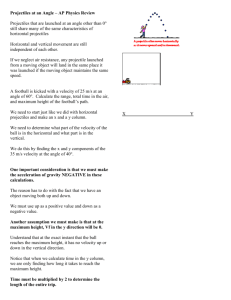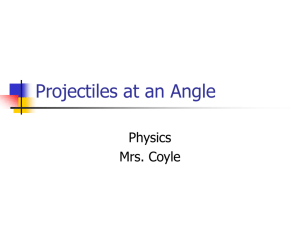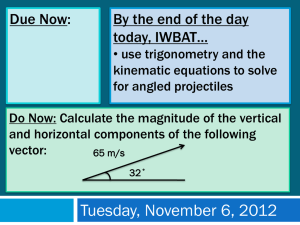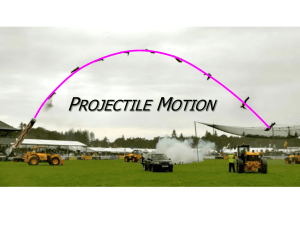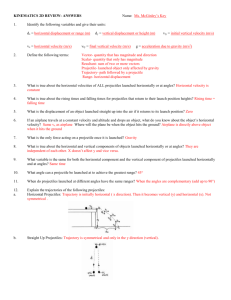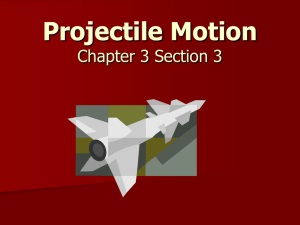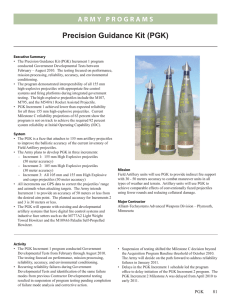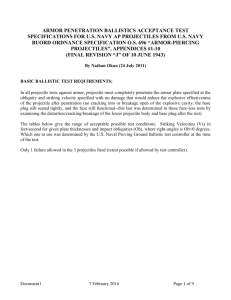Projectiles at angles ppt
advertisement
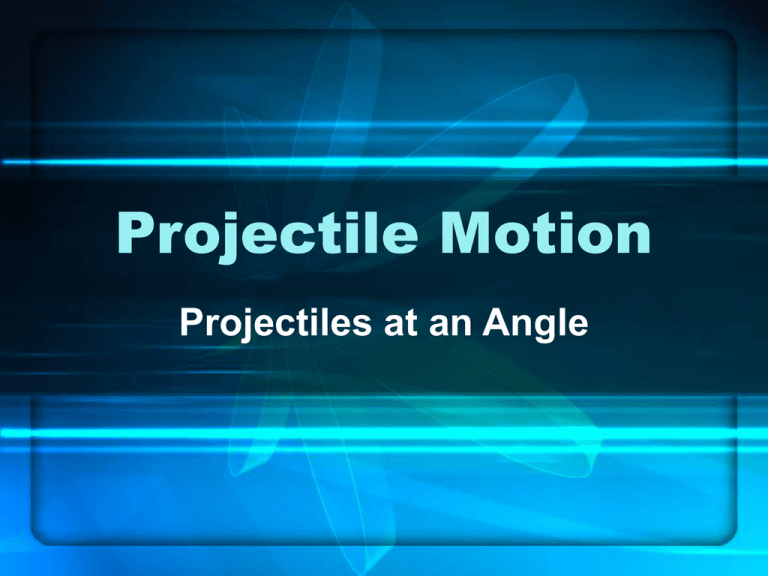
Projectile Motion Projectiles at an Angle Projectiles at an Angle • Last lecture, we discussed projectiles launched horizontally. • Horizontal projectiles are just one type of projectile problem that we can discuss. • They are also one of the easiest Projectiles at an Angle • Now we will discuss projectiles that are launched at an angle other than 0°. • They still share many of the same characteristics of horizontal projectiles Projectiles at an Angle • As the animation to the right shows, horizontal and vertical movement are still independent of each other. • If we neglect air resistance, any projectile launched from a moving object will land in the same place it was launched if the moving object maintains the same speed. Projectiles at an Angle • Lets analyze the following problem and attempt to solve it. • A football is kicked with a velocity of 25 m/s at an angle of 60°. Calculate the range, total time in the air, and maximum height of the football’s path. Solving Problems • We need to start just like we did with horizontal projectiles and make an x and a y column. • We need to determine what part of the velocity of the ball is in the horizontal and what part is in the vertical. • We do this by finding the x and y components of the 25 m/s velocity at the angle of 60°. • By using trigonometry, we find the following: • Vx = Cos60(25m/s) =12.50 m/s • Vy = Sin60(25m/s) = 21.65 m/s Solving Problems • X – column • Y – column • • • • • • • • • • • • • • • • Vi = 12.50 m/s t = 4.42 sec d = vt d = (12.50)(4.42) d = 55.25m Vi = 21.65 m/s a = -9.8 m/s Vf = 0 (at max height) Vf = Vo + at 0 = 21.65 + (-9.8)(t) t = -21.65/-9.8 t = 2.21 seconds Vf2 = Vi2 + 2ad 0 = (21.652) + (2)(-9.8)(d) d = -468.72/-19.6 d = 23.91 m Important Considerations • One important consideration is that we must make the acceleration of gravity NEGATIVE in these calculations. • The reason has to do with the fact that we have an object moving both up and down. • We must use up as a positive value and down as a negative value. Important Considerations • Another assumption we must make is that at the maximum height, Vf in the y direction will be 0. • Understand that at the exact instant that the ball reaches the maximum height, it has no velocity up or down in the vertical direction. Important Considerations • Notice that when we calculate time in the y column, we are only finding how long it takes to reach the maximum height. • Time must be multiplied by 2 to determine the length of the entire trip
